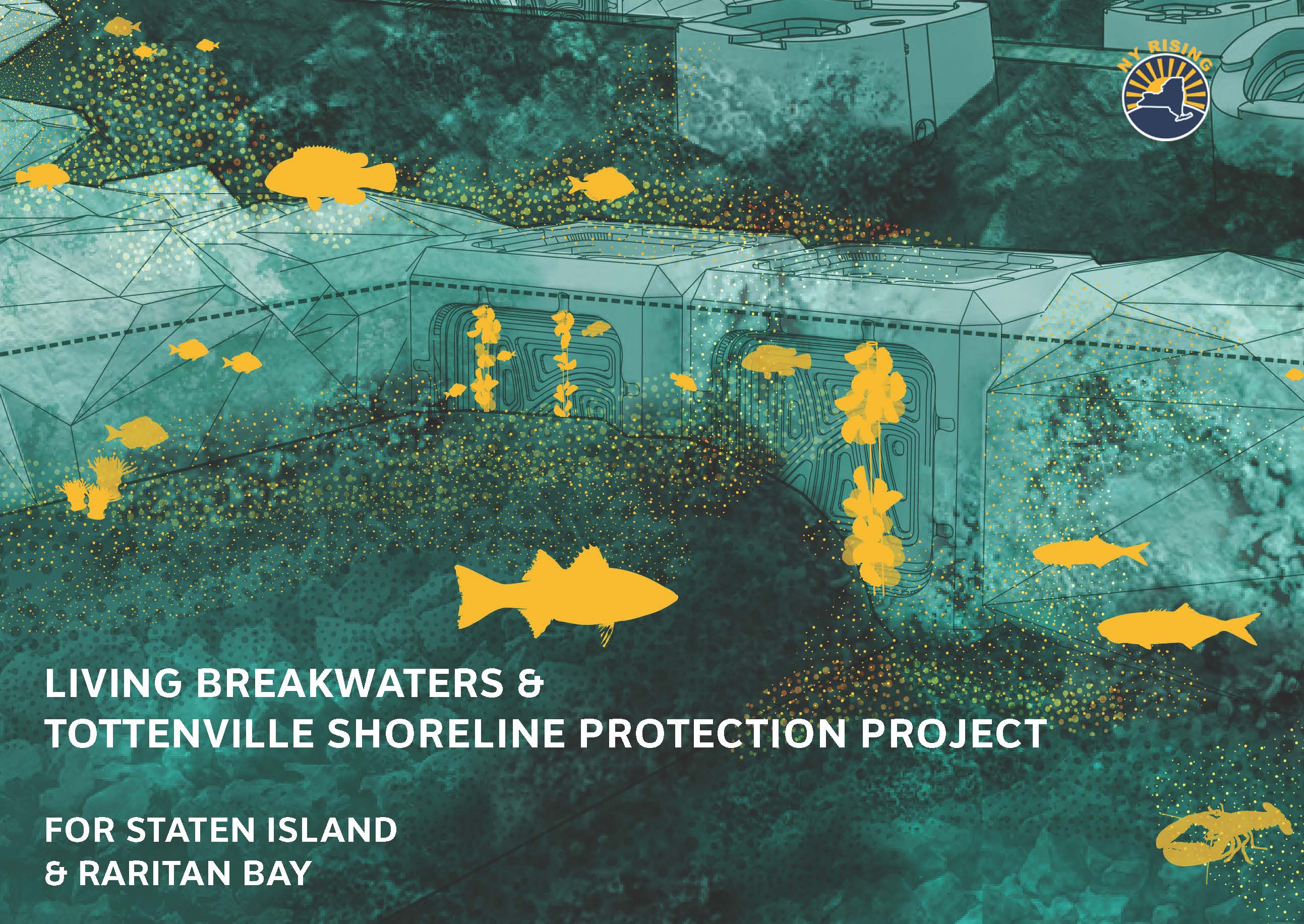
Kate is also an associate professor of architecture and urban design at the Columbia University Graduate School of Architecture, Planning and Preservation, where she founded the Urban Landscape Lab, which is dedicated to affecting positive social and ecological change in the joint built-natural environment.īut the Living Breakwaters project may be the SCAPE team’s most impactful yet. SCAPE is a landscape architecture and urban design office based in Manhattan and specializing in urban ecology, site design, and strategic planning. We know what you’re thinking: what is oyster-tecture, anyway? Just ask Kate Orff, landscape architect and the founding principal of SCAPE Studio. Image courtesy of SCAPE / LANDSCAPE ARCHITECTURE PLLC
LIVING BREAKWATERS FULL
Though we know the shores of Manhattan, especially along today’s Meatpacking District and in the Financial District near aptly named Pearl Street, were chock full of oysters, there were also a couple of islands that played a part in New York’s oyster culture, namely Ruffle Bar, a sandbar in Jamaica Bay, and Robbins Reef, a reef off Staten Island marked with a lighthouse.įind out about these two forgotten islands They were sold from street carts as well as restaurants, and even the poorest New Yorkers enjoyed them regularly. Not only were they tasty treats, but they filtered water and provided shelter for other marine species. To request an invitation to attend the November 20th celebration, please click here.Ĭlick here to learn more about Living Breakwaters.Today, when most New Yorkers think of oysters it has to do with the latest happy hour offering the underwater delicacies for $1, but back in the 19th century oysters were big business in New York City, as residents ate about a million a year. In fact, oyster reefs once covered more than 220,000 acres of the Hudson River estuary and it was estimated that the New York Harbor was home to half of the world’s oysters. Orff will accept the prestigious Fuller Challenge prize and a $100,000 cash award on behalf of the SCAPE team at a celebration at The Wythe in Brooklyn, New York on November 20, 2014. As climate change impacts threaten shoreline populations, Living Breakwaters hopefully represents a paradigm shift in how we collectively address climate risks, by focusing on regenerating waterfront communities and social systems, and enhancing threatened ecosystems.” SCAPE Associate Gena Wirth added, “The project embraces people as a critical participant in a healthy urban ecosystem, and uses the regenerative power of ecology to reduce risk and grow a layered, resilient shoreline.” Kate Orff of SCAPE said, “We are so honored to be the 2014 Fuller Challenge recipient – Fuller was optimistic about the future of humanity and deeply believed in cooperation as the way forward. The Living Breakwaters project integrates components ranging from ecologically engineered “Oyster-tecture,” to transformational education around coastal resiliency and the restoration of livelihoods traditional to the community of Tottenville in Staten Island, while also spurring systemic change in regulatory pathways at the State level. Living Breakwaters is a project based in connections-the leadership team brings their deep expertise in technology and ecological science into the social dimension onshore in partnership with the community itself,” added Sarah Skenazy, Fuller Challenge Program Manager. “This year’s Challenge winners deeply know that doing a physical intervention off the coastline would not be enough to create systemic change. The project team understand that you cannot keep back coastal flooding in the context of climate change, but what you can do is ameliorate the force and impact of 100 and 500 year storm surges to diminish the damage through ecological interventions, while simultaneously catalyzing dialog to nurture future stewards of the built environment,” said Bill Browning of Terrapin Bright Green, a 2014 senior advisor and jury member. It is on the one hand an engineering and infrastructure-related intervention, but it also has a unique biological function as well.

“Living Breakwaters is about dissipating and working with natural energy rather than fighting it. The project was submitted by SCAPE / LANDSCAPE ARCHITECTURE PLLC based in New York.

The Buckminster Fuller Institute (BFI) is pleased to announce that a comprehensive climate change adaptation and community development project, Living Breakwaters has been selected as the winner of the 2014 Fuller Challenge, “socially responsible design’s highest award”. Introductions, Forewards, and Contributions.Notes On Anne and Bucky Fuller’s Deaths.Eight Strategies for Comprehensive Anticipatory Design Science.


 0 kommentar(er)
0 kommentar(er)
